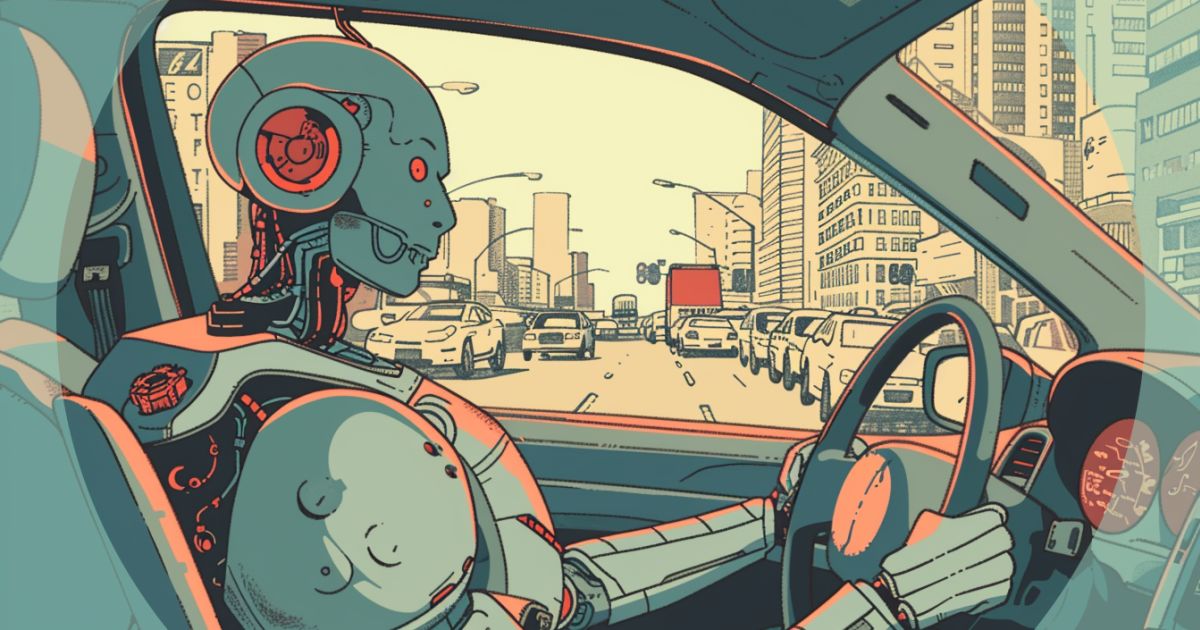Think you’re a better driver than most people? You’re not alone. And you may be one reason self-driving cars haven’t taken off.
About 77 percent of participants surveyed in a new study rated themselves superior to automated vehicles, while 60 percent thought other people were worse. Drivers’ egos may be bridling widespread acceptance of automation, says Julian De Freitas, an assistant professor of business administration at Harvard Business School, and one of the authors of the piece forthcoming in the Journal of the Association for Consumer Research.
“We find people are OK with some level of automation but prefer higher levels of automation for others than themselves,” De Freitas says. “This is because they think that they are better at driving than increasingly automated systems. We believe this creates a barrier to adoption.”
“Whether people utilize automated vehicles is not just a matter of how they view the technology in a vacuum, but it’s how they view it in relation to themselves.”
The pursuit of vehicle automation isn’t just a technological or financial quest by automakers, it’s an urgent public safety issue. Worldwide, traffic accidents are the leading cause of death for people ages 2 through 59, with some 98 percent of accidents tied to human error. And accidents cost $340 billion, or 1.6 percent, of US Gross Domestic Product in 2023, according to the US National Highway Traffic Safety Administration.
But automating cars meets sticky psychological resistance on the part of drivers:
“Whether people utilize automated vehicles is not just a matter of how they view the technology in a vacuum, but it’s how they view it in relation to themselves,” says De Freitas, who is also director of HBS’s Ethical Intelligence Lab and focuses on how humans interact with self-driving vehicles and other AI tools.
De Freitas coauthored the study with HBS doctoral student Stuti Agarwal; Anya Ragnhildstveit, a doctoral student at the University of Cambridge; and Carey K. Morewedge, a professor at Boston University’s Questrom School of Business.
What’s the right amount of automation for people?
To parse how US drivers view their own driving abilities and that of automated vehicles, the researchers conducted two sets of experiments and surveys.
In one experiment with 579 participants who are representative of national demographics, the researchers asked half the group to rate on a scale from zero to five the level of driving automation they preferred for themselves, while the rest of the group shared the level they preferred for others.
Level zero of the scale, which was developed by the Society of Automotive Engineers, means none of the vehicle’s functions have been automated. Level five indicates a car is fully automated—technology that isn’t commercially available yet.
“In both cases, people wanted less automation for themselves than they wanted for others.”
On average, participants preferred level two for themselves. Level two vehicles have multiple automated features, such as cruise control that adjusts to traffic conditions and lane centering, and let the human take control at any point. For others, participants preferred level three, in which the car also monitors and reacts to the environment, and the human can also still intervene.
In the second experiment with 803 people, the researchers also gauged preferences to ride in fully automated vehicles (level 5) specifically, on a scale from 0 to 100. Again, drivers preferred such vehicles for others (52 out of 100) more than for themselves (40 out of 100).
“In both cases, people wanted less automation for themselves than they wanted for others,” De Freitas says. “But if everyone acts on this preference, then this will prolong the adoption of automated vehicles.”
Practical tips to reduce ego behind the wheel
So, how can automakers and policy makers chip away at this psychological roadblock?
1. Focus on benefits other than safety. Although safety is one of the most promising benefits of automated vehicles, talking about safety may do little to convince drivers who already think they are safer than automated vehicles.
“For example, Toyota is labeling two of its automated features ‘guardian and ‘chauffeur.’ While the first connotes safety, the second conveys the idea that you can sit back and relax while the vehicle drives you around. Our results suggest the second label may leverage more persuasive benefits.”
2. Provide incentives, like insurance discounts or tax breaks. Such incentives may motivate drivers to take a second look at automation features and tolerate their discomfort around driving in an “inferior” vehicle, the authors suggest.
3.Educate consumers—effectively. Educational videos about people’s biases have been shown to reduce biases in the lab. The challenge for marketers is to make such interventions short, memorable, and motivational—as when Metro Trains in Melbourne, Victoria, successfully launched a viral ad campaign on railway safety called “Dumb ways to die.”
4. Get concrete. People have more wiggle room to inflate their driving abilities when thinking about driving in abstract terms, like “driving well.” Says De Freitas, “Ad campaigns can remind them of concrete ways in which they are not ideal drivers, such as the last time they sped, did not fully stop at a stop sign, or used a phone while driving.”
You Might Also Like:
Feedback or ideas to share? Email the Working Knowledge team at hbswk@hbs.edu.
Image: Illustration created by HBSWK using images generated by Midjourney, an artificial intelligence tool
“Harvard Business School is the graduate business school of Harvard University, a private research university in Boston, Massachusetts. It is consistently ranked among the top business schools in the world and offers a large full-time MBA program, management-related doctoral programs, and executive education programs.”
Please visit the firm link to site





